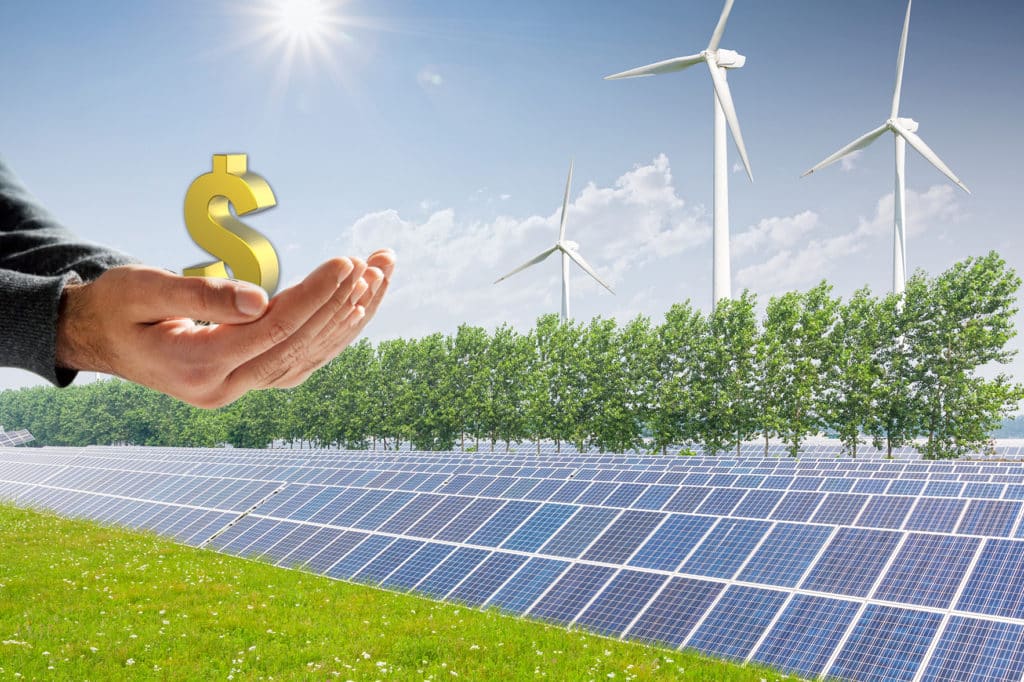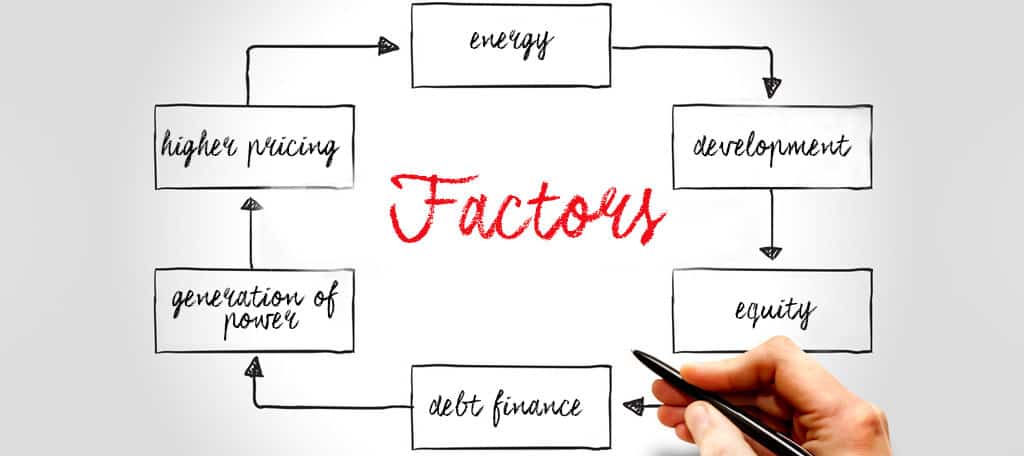
If you care about climate change, I have some good news. According to the latest statistics, the cost of wind power is now on a par with the price of traditional power from fossil fuels. Solar energy is also more reasonably priced and becoming more affordable all the time. Meanwhile, the cost of coal-fired and gas-powered energy is trending upward.
Internationally, investments in alternative energy are growing as wind and solar become more cost-effective. All this is good news for the environment. More clean power means less fossil fuel consumption, and as a result, a reduction in greenhouse gas emissions worldwide.
Current Trends

Both Bloomberg New Energy Finance (BNEF) and the United Nations Energy Programme (UNEP) agree that the price imbalance between green energy and traditional power is beginning to equalize. BNEF expects the average cost worldwide for onshore wind-generated power to reach just $83 per megawatt-hour by December, a $2 reduction over the course of the year. Similarly, the average cost of thin film solar PV generation has come down $7 over the past 12 months, with the global average at $122 per MWh.
The steady downward trend in the expense of wind and solar energy is a win for the climate. Improving technology, wider distribution and increasing reliability of these renewables is reinventing the way the world gets its power. A surge in investor capital in the quickly growing renewable industry also indicates a bright future for affordable wind and solar electricity.
Factors that Affect Energy Choices

We should take into account, however, that the factors affecting energy costs vary from region to region. Here in the U.S., we have plentiful fossil fuel resources like shale oil fields and coalmines, so our costs for traditional energy are comparatively low, averaging $65 per MWh as of 2015. The cost for renewable energy remains somewhat higher. As of the report release date, onshore wind power was about $80 per MWh, and solar was just over $100.
In Europe, the cost for energy sourced from fossil fuels is higher than in the U.S. According to the BNEF report, North and South Americans pay about $66 per MWh, but the cost in European countries averages $118 MWh.
One reason for this higher pricing is the EU’s strict limitations on carbon emissions. Because they have to pay more for regulated fossil fuel energy, it seems only natural that Europeans are motivated to develop cheaper, more environmentally friendly power sources. It doesn’t hurt that averages for wind power in the UK and Germany range between $80 and $85 per MWh.
It’s worth noting that all of the pricing data in the BNEF and UNEP reports are based on levelized costs. They include the expense of capital, development, equity and debt finance, operation, maintenance and generation of power.
The Future of Green Energy

I think you’ll agree it’s interesting that while China, like the U.S., enjoys low cost coal-generated power, the Asian superpower invested a record $83.3 billion in renewables in 2015. That is 33 percent more than it spent the previous year. If nothing else, this looks like a giant affirmation that wind and solar power will have a significant role in the world’s economic and environmental future.
Other economic indicators may be less spectacular but just as telling. For example, UNEP notes a 17 percent increase in worldwide renewables investment between 2013 and 2014. In developing countries, the increase was a staggering 36 percent for the same time period.
As green energy prices fall, investments in new installations grow. UNEP’s report asserts that investors are already putting more dollars into renewables — excluding large hydroelectric plants — than they invest in new fossil fuel-burning facilities. In fact, Bloomberg’s 2030 Market Outlook report predicts that by 2030, renewables will account for a 60 percent power capacity upgrade and garner 65 percent of energy investment dollars overall.
Also, once new wind and solar farms get established, the cost of the energy they produce for public and private use will be consistently cheaper than power plant electricity. Unlike traditional plants that consume an ongoing supply of costly fossil fuels, renewables run on free energy from natural sources that do not have environmental price tags attached.
Faster Transition Needed to Meet Climate Goals

Here’s the downside, though. Even though competitive pricing is driving growth in the field of renewable energy like wind and solar power, it isn’t happening fast enough. At the current rate of change, we can’t meet international greenhouse gas reduction goals, says the International Energy Agency (IEA).
These goals, established during the 2011 United Nations Framework Convention on Climate Change, call for emissions reductions over the period from 2005 to 2020. Goals range from 5 percent in Australia to 45 percent in China. The U.S. has pledged to reduce greenhouse gas emissions by 17 percent while the EU has pledged to lower emissions by 20 percent.
In the 2014 special report, “World Energy Investment Outlook,” IEA contends that the prevailing policies and market signals cannot attract the $53 trillion needed over the next 20 years to meet emission reduction deadlines and put the brakes on climate change. Therefore, we have to encourage policy makers to set stricter, more consistent guidelines that encourage greater growth in the renewable energy industry.
Conclusion

As increasingly affordable pricing makes renewable energy more attractive, the world at large is investing more time, effort and money in the installation of wind and solar power. These investments promise significant economic returns. Even more importantly, they will help the world address climate change and create a healthier environment for everyone.


The hardest thing to do will be to create cheaper parts for the renewable energy facilities, whether it is solar panels, geothermal pumps or wind turbines. The overall technology might be becoming more accessible, but maintenance makes it so it can’t compete with the traditional energy sources, despite them emitting CO2 and other pollutants.